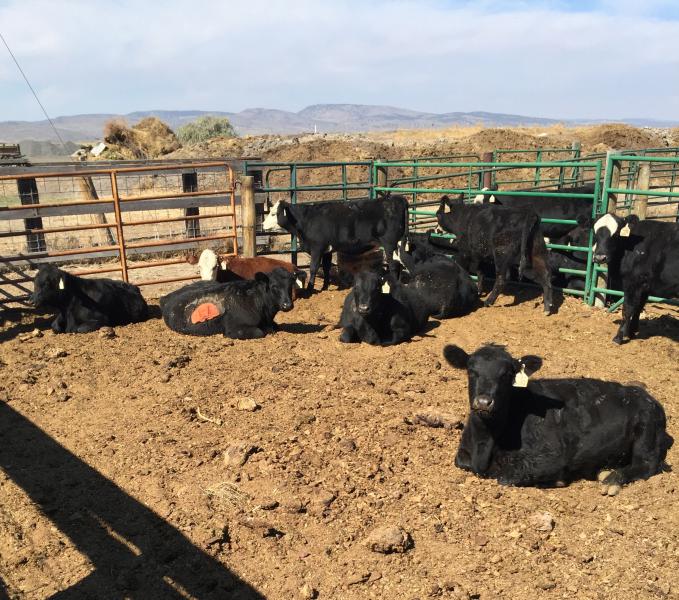District court still has not made final determination on whether additional stay will be extended until January 2018.

Unless an extension is granted, on Nov. 15, a reporting rule administered by the federal Environmental Protection Agency was to be triggered that will apply to certain livestock operations. However, Leah Ziemba, industry group chair of agribusiness, food and beverage at the Michael Best law firm, said the firm is encouraging producers not to report yet.
The reporting applies to certain releases of hazardous substances and the requirement that the government be notified under the Comprehensive Environmental Response, Compensation & Liability Act (CERCLA) and the Emergency Planning & Community Right- to-Know Act (EPCRA).
EPA received an initial stay by the D.C. Circuit Court until Nov. 15, which was to be the deadline by which farms would need to start complying. Ziemba explained that EPA’s motion to the court for an additional stay, which would push the compliance date out until January 2018, now requires that the court act to either grant EPA’s request for an additional stay or issue a mandate that reinstates its prior order with a specific deadline for compliance.
“We do not believe that producers will risk additional liability by not reporting on Nov. 15 due to the fact that the legal process with the D.C. Circuit has not yet concluded,” she explained. “This is very much a ‘stay tuned’ sort of situation.”
In 2008, EPA exempted all livestock operations from CERCLA reporting and exempted all but the largest livestock operations from EPCRA reporting. However, in April, a federal appeals court issued a decision vacating EPA’s exemption for reporting of air emissions from livestock operations under CERCLA/EPCRA. Now, hundreds of thousands of farms will have to evaluate whether they have a reporting obligation under federal law.
On Oct. 26, 2017, EPA issued interim guidance designed to educate livestock operations about the upcoming reporting requirements for emissions from animal waste. (Find additional information here.)
Under the guidance, EPA noted that the reportable quantity for ammonia and for hydrogen sulfide is triggered at a release into the air of 100 lb. or more within a 24-hour period, explained Roger McEowen, Kansas Farm Bureau professor of agricultural law and taxation at Washburn University. That level would be reached by a facility with approximately 330 head (for a confinement facility), according to a calculator used by the University of Nebraska-Lincoln that is based on emissions produced by the commingling of solid manure and urine.
The EPA guidance also indicates that reporting under EPCRA does not apply to air emissions from substances that are used in “routine agricultural operations,” McEowen added. Those substances, according to EPA, don’t meet the definition of “hazardous.” EPA states that “routine agricultural operations” include “regular and routine” operations at animal feeding operations, nurseries and other horticultural and aquaculture operations. That would include on-farm manure storage used as fertilizer, paint for maintaining farm equipment, fuel used to operate farm machinery or heat farm buildings and chemicals for growing and breeding fish, EPA noted.
It would also appear to include livestock ranches where cattle are grazed on grass. “A similar conclusion could be reached as to the term ‘facility’: A ‘facility,’ under CERCLA, should not include a cow/calf grass operation where the livestock graze on grass,” McEowen said. “However, at the present time, the EPA has not provided any official guidance concerning the issue.”
EPA conceded that CERCLA release reporting will be “challenging for farmers,” because there is generally no accepted methodology for estimate emission quantiles at this time, Ziemba explained in a Nov. 13 webinar hosted by the American Dairy Coalition.
Michael Best associate Taylor Fritsch added, “Farmers, much like the EPA, are stuck between a rock and a hard place in the difficulty of making these estimates.” He said producers can use past release data, engineering estimates, their knowledge of the farm operation and release history and best professional judgment in hopes of determining whether emission levels will exceed the permitted thresholds.
Fritsch detailed some of the steps producers should take in order to report. If that level of emission occurs for either substance, the owner (or operator) of the “facility” must inform the U.S. Coast Guard's National Response Center (NRC) of any individual release by calling (800) 424-8802.
Fritsch said facilities should provide the NRC representative with the name and location of the farm and any of the hazardous substances that could be potentially release. NRC does not require personally identifiable information such as an address, and EPA indicated that a generic local city and state may be sufficient, he explained.
EPA has also created an email option for notification. Farms may email [email protected] to report a potential continuous release reporting requirement.
Fritsch said facilities will then need to submit an initial notification written notification to the EPA regional office within 30 days of calling or sending an email to NRC. Facilities would then be required to submit a one-time anniversary follow-up report to the EPA regional office within 30 days of the anniversary of the first anniversary date of the written notification.
About the Author(s)
You May Also Like


.png?width=300&auto=webp&quality=80&disable=upscale)


